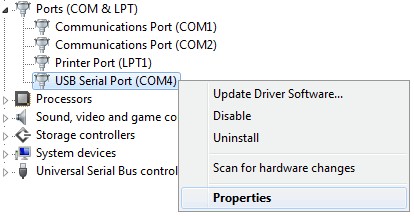This comprehensive guide provides step-by-step instructions on how to install the correct Vcds Lite Cable Driver for Windows, enabling you to use VAG-COM 409.1 KKL USB cable for vehicle diagnostics. While VAG-COM 409.1 offers limited functionality and only supports vehicles up to 2004, this guide focuses on successfully installing its drivers for VCDS-Lite software. For more comprehensive diagnostics, consider a newer VAG-COM cable with the full, unlocked VCDS software.
Installing the VCDS Lite Cable Driver: A Step-by-Step Guide
Installing the driver for your VCDS Lite cable involves several steps. Carefully follow these instructions to ensure a successful installation. Do not connect the cable to your computer until instructed.
Step 1: Download and Install the Correct Driver Pack
First, download the appropriate VAG-COM driver pack. Start with VAG-COM Driver Pack 1. Installation instructions vary depending on your Windows version.
Windows Vista, 7, 8, 8.1, and 10:
- Unzip the downloaded driver pack.
- Locate and double-click the “Install.exe” file.
- Once the installation is complete, connect the VCDS Lite cable to your computer’s USB port. Windows should automatically install the necessary drivers.
Windows XP:
- Unzip the downloaded file.
- Double-click “Install.exe”.
- Connect the cable to your computer. The “Found New Hardware Wizard” will appear.
- Select “Yes” to allow Windows to search for the driver software online.
- Choose “Install the software automatically”.
- Click “Finish” once the first driver installs. The wizard will reappear for a second driver. Repeat steps 4 and 5.
Troubleshooting Driver Installation Issues:
If the initial driver installation fails, download VAG-COM Driver Pack 2. Unextract the files. With the cable connected, open Device Manager (Control Panel > System > Device Manager or Control Panel > System > Hardware > Device Manager for Windows XP). Locate the “USB Serial Port” under “Other devices” or “Ports (COM & LPT)”. Right-click, select “Update Driver Software”, and direct Windows to the folder containing Driver Pack 2.
Step 2: Identify and Configure the COM Port
After successful driver installation, identify the assigned COM port number:
- Open Device Manager.
- Find the “USB Serial Port” (under “Other devices” or “Ports (COM & LPT)”). Note the COM port number assigned to it. It should ideally be between 1 and 4.
If the COM port number is above 4:
- Right-click “USB Serial Port” and select “Properties”.
- Navigate to “Port Settings” > “Advanced”.
- Under “COM Port Number,” select a number between 1 and 4.
Step 3: Test the VCDS Lite Cable Connection
With the cable connected to your computer and the ignition turned on in your vehicle:
- Launch the VCDS-Lite software.
- Click “Options”.
- In the “Select COM Port” box, choose the COM port number identified in Step 2.
- Click “Test”. A successful connection will display “Interface Status: Found!”.
Troubleshooting VCDS Lite Cable Connection Problems
If the test fails:
- Ensure no conflicting software or devices are using the same COM port or USB resources.
- Remember that VAG-COM 409.1 KKL cables are incompatible with CAN-BUS systems.
- Confirm the car’s ignition is ON.
- Try testing with each COM port from 1 to 4.
- Verify the driver is correctly installed (Step 1).
- Only Audi, Volkswagen, Skoda, and Seat vehicles are fully supported. Other brands might only work for generic OBD-II functions.
- For the error “Can’t Synch Baud Rate,” go to “Options” in VCDS-Lite and try setting “Start Baud” to 9600, 4800, or 1200. Cycle the ignition OFF and ON after each attempt.
By following this guide, you should be able to successfully install the VCDS Lite cable driver and establish a connection for basic vehicle diagnostics. Remember, limitations exist with the VAG-COM 409.1 KKL cable. Consider upgrading to a newer cable and full VCDS software for comprehensive diagnostics of newer vehicle models.

